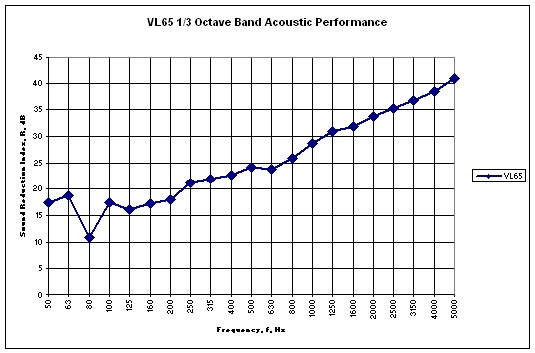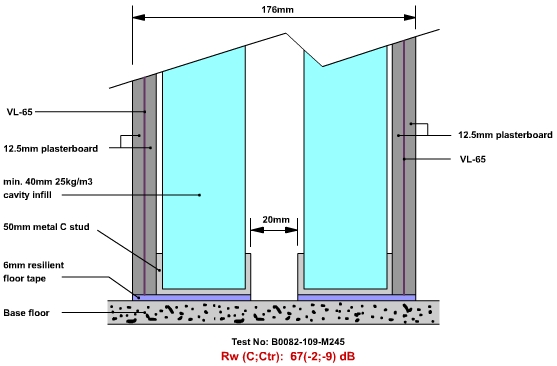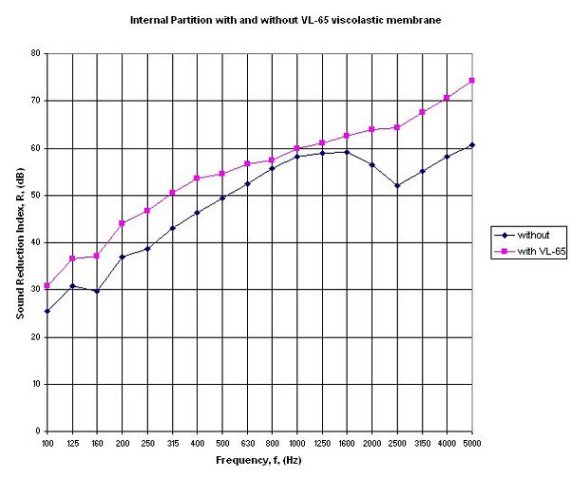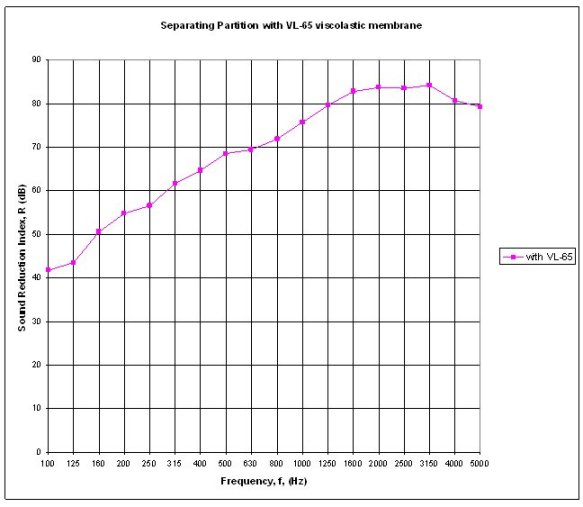Menu
An MLV type acoustic membrane with improved low frequency performance. Ideal for upgrading lightweight partitioning. VL65 can also used in tuned basstrap construction.
VL65 can give an additional +6dB when used in a stud wall buildup with +8dB at 160Hz.
Sold per roll or per pallet of 30 rolls.
£54.50
Out of stock
VL-65 acoustic membrane is a high mass, visco-elastic acoustic damping membrane with the added advantage of improved low frequency performance over our other acoustic membranes. It is internally reinforced with a micro fibreglass carrier for improved dimensional stability.

| Hz | 50 | 63 | 80 | 125 | 250 | 500 | 1k | 2k | 4k | Rw |
| R dB | 18 | 19 | 11 | 17 | 21 | 24 | 29 | 34 | 39 | 28 |
| Test Report Number: 130702/002 | ||||||||||
| VL-65 Technical Data | |
| Density | 1.9g/cm3 (+/-0.05) |
| Colour | Black |
| Roll Size | 6m x 1m |
| Weight | 6.5kg/m2 |
| Thickness | 4mm |
| Fire Resistance | >B,s1,d0 when used in partitions as shown below |
| Water Vapour resistance (µ) | 50000 |
| Maximum tensile strength | 350 ±150 / 250 ± 100 EN 12311-1 |
| Elongation | ±45 EN 12311-1 |
| Cold Flexibility | -10°C; EN1109 |
| High Temperature flow resistance | 120°C; EN1110 |
VL65 Acoustic Membrane eliminates the coincidence dip around 2.5kHz found in rigid sheet materials such as plasterboard on studwork by 12dB.
The tests below show standard studwall constructions with and without VL65 Acoustic Membrane sandwiched between the sheets.
The low frequency resonance dip at around 160Hz is reduced by 8dB.
This superb material will improve the overall averaged Rw of a stud partition, as shown below, by 6dB.



